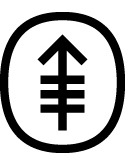| Abstract: |
This study was designed to test the influence of dietary calcium and vitamin D levels on the promotional effect of high-fat diets on chemically induced mammary carcinogenesis. In a small preliminary experiment (Experiment A), 40 female Sprague-Dawley rats, 43 days old, were randomly divided into 5 groups (8 rats/group) and fed a semipurified diet containing 3% sunflower seed oil (SF) by weight, 1.5 mg of calcium/kcal and 0.5 IU vitamin D/kcal of diet. After 1 week, each rat was given 2.5 mg of dimethylbenz(a)anthracene by gastric gavage. One week later, the animals were switched to 1 of 4 diets varying in fat (3 or 20% SF by weight), calcium (1.5 or 0.25 mg/kcal), vitamin D (0.5 or 0.05 IU/kcal), and phosphate or to a fifth diet containing 3% SF by weight, 0.1 mg of calcium/kcal and 0.05 IU of vitamin D/kcal. In all 5 diets, calcium:phosphate weight ratios were maintained at 1.2:1. In animals fed the high-fat diet, reduction of dietary calcium (1.5 to 0.25 mg/kcal) and vitamin D (0.5 to 0.05 IU/kcal) increased the incidence of mammary lesions from 37 to 75% and the total number of lesions from 4 to 16. A trend toward an increase in lesion weight and total lesion burden was also seen. To confirm these results, the experiment was repeated using the same protocol; 126 rats were divided into 6 groups, treated with dimethylbenz(a)anthracene, and fed the diets as described. A sixth diet was included that contained 20% SF by weight, 0.01 mg of calcium/kcal, and 0.05 IU of vitamin D/kcal. As for Experiment A, in animals fed the high-fat diet, reduction of dietary calcium (1.5 to 0.25 mg/kcal) and vitamin D (0.5 to 0.05 IU/kcal) resulted in an increase in total mammary lesions from 31 to 55, a significant increase in average lesion burden/rat with lesions (1.6 ± 0.6 to 12 ± 3 g), and a trend toward increasing weight of lesions. The effect was less obvious in animals fed the low-fat diet where, in both experiments, an increase in the incidence of mammary lesions was observed only when the dietary calcium was reduced from 1.5 to 0.1 mg/kcal. These data suggest that decreasing calcium and vitamin D increase the promoting effects of a high-fat diet on mammary tumorigenesis in the rat. © 1989, American Association for Cancer Research. All rights reserved. |
| Keywords: |
nonhuman; animal; animal experiment; body weight; calcium; histology; vitamin d; rat; rats; breast carcinogenesis; mammary neoplasms, experimental; fat intake; rats, inbred strains; plant oils; female; priority journal; article; support, non-u.s. gov't; calcium, dietary; 9,10-dimethyl-1,2-benzanthracene; dimethylbenz[a]anthracene; dietary fats, unsaturated
|



